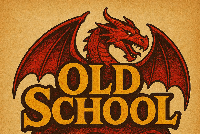I am sure there is something already posted about this but how do you guys handle adventures in large regions/areas? I am doing the Reign of Winter adventure path and the first several encounters are in a set of woods several miles across. the map loads and i can set the grid size in terms of x number of miles per square.. but the encounters are in areas that would measure 1/16 of a square. How do you do things like track movement and fog of war etc. etc. etc. Any tips are appreciated. Or do you simply do it verbally.. describe where they are and then pull up the specific encounter map when you are ready? thanks.









